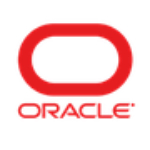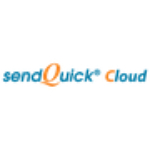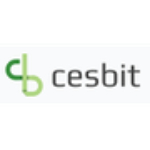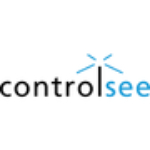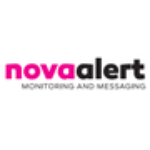TechnologyCounter provides genuine, unbiased real user reviews to help buyers make informed decisions. We may earn a referral fee when you purchase through our links, at no extra cost to you.
List of Best IT Alerting Software
Showing 1 - 14 of 14 productsOracle Cloud Infrastructure Notifications, the latest software solution designed to revolutionize your communication strategy. Say goodbye to missed updates and delayed notifications with our efficient system. Get real-time alerts and instant notific...Read Oracle Cloud Infrastructure Notifications Reviews
sendQuick Cloud the innovative communication solution designed to streamline and enhance your business messaging. With its user-friendly interface and customizable features, sendQuick Cloud offers a seamless is a way to connect with your customers, s...Read sendQuick Cloud Reviews
DutyCalls is a solution for streamlining your businesss operations and boosting productivity. With its advanced features and user-friendly interface, DutyCalls empowers you to efficiently manage tasks, track progress, and collaborate with team member...Read DutyCalls Reviews
StatusDashboard is a tool for monitoring and managing critical processes in your organization. With real-time data and customizable dashboards, StatusDashboard empowers businesses to make informed decisions and ensure seamless operations. Stay ahead...Read StatusDashboard Reviews
Codeless Alerting -the ultimate solution for real-time monitoring and alerting without the need for complex coding. With its user-friendly interface, this software simplifies the process of setting up and managing alerts, allowing businesses to respo...Read Codeless Alerting Reviews
Controlsee is an innovative software designed to streamline and optimize business operations. With its user-friendly interface features, Controlsee allows companies to effortlessly manage tasks, monitor progress, and make informed decisions. Take you...Read Controlsee Reviews
GISual is a mapping software designed to revolutionize the way you visualize and analyze geographic data. With its intuitive user interface features, GISual takes mapping to the next level, allowing you to gain deeper insights and make informed decis...Read Gisual Reviews
SyncAlert is a solution for all your synchronization needs. This revolutionary software is designed to streamline your data syncing process and ensure seamless coordination between multiple devices. With SyncAlert, you can bid farewell to the hassle...Read SyncAlert Reviews
Apache Eagle is a open-source software designed for real-time monitoring, alerting, and analytics in large scale distributed environments. With its advanced capabilities, Eagle helps organizations detect and respond to potential issues, ensuring seam...Read Apache Eagle Reviews
DeskAlerts is a solution for streamlining communications within your organization. With its powerful notification system, DeskAlerts allows for quick is a dissemination of important information, enhanced employee engagement, and improved overall prod...Read DeskAlerts Reviews
Squid Alerts is a tool for businesses to effectively manage and respond to critical events. With Squid Alerts, stay on top of potential issues, track progress and communicate efficiently. Boost your teams productivity and establish a strong crisis ma...Read Squid Alerts Reviews
Novaalert is a intelligent software designed to keep you in the know at all times. With its advanced features and user-friendly interface, Novaalert streamlines communication and delivers timely alerts for any emergency or critical event. Stay inform...Read novaalert Reviews
Squid Alerts is a tool for businesses to effectively manage and respond to critical events. With Squid Alerts, stay on top of potential issues, track progress and communicate efficiently. Boost your teams productivity and establish a strong crisis ma...Read Squid Alerts Reviews
GISual is a mapping software designed to revolutionize the way you visualize and analyze geographic data. With its intuitive user interface features, GISual takes mapping to the next level, allowing you to gain deeper insights and make informed decis...Read Gisual Reviews
Codeless Alerting -the ultimate solution for real-time monitoring and alerting without the need for complex coding. With its user-friendly interface, this software simplifies the process of setting up and managing alerts, allowing businesses to respo...Read Codeless Alerting Reviews
- What Is IT Alerting Software?
- Top Reasons Why Businesses Need IT Alerting Software?
- What Are the Top Key Features of IT Alerting Software?
- What Are the Top Benefits of IT Alerting Software?
- What Are the Steps to Choose the Right IT Alerting Software?
- What Are the Types of IT Alerting Software for Different Industries?
- What Are the Technology Trends for Best It Alerting Software?
- What Are the Deployment Options for IT Alerting Software?
What Is IT Alerting Software?
IT alerting software refers to a type of software that facilitates the notification of users on certain alterations inside a system. The software facilitates the notification of users in the event of system modifications, including but not limited to the arrival of a new answer, an update, or the identification of an issue.
The system can configure notifications to be sent to users upon the occurrence of a predetermined event or when there is a need to monitor behavior. The utilization of its alert management software enables the transmission of electronic communications, such as emails, text messages, or notifications, to end-users upon the occurrence of specific predetermined conditions.
As an illustration, a website can establish a mechanism wherein an alert is sent upon a customer's placement of an order or upon any modifications made to the system. Additionally, it can be employed for monitoring system performance, such as determining the need for server reboot or assessing the level of traffic sent toward a specific website.
IT alerting software is a valuable tool for enterprises as it aids in the management of resources and facilitates the enhancement of operational efficiency. Automated alerts possess the capability to alert users promptly regarding matters requiring attention, hence preempting the escalation of those matters into significant problems.
This software provides the capability to notify users in the event of system issues, including the detection of security vulnerabilities. The configuration of the best IT alerting software allows for the dissemination of alerts to users through various communication channels, such as phone calls, text messages, emails, and other means.
The utilization of this tool facilitates the provision of timely information to users regarding the most recent advancements in the system, hence assisting businesses in maintaining the seamless operation of their systems.
Top Reasons Why Businesses Need IT Alerting Software?
1. The implementation of proactive monitoring enables the timely discovery and identification of potential problems, hence mitigating the risk of these issues escalating into significant challenges.
2. The process of data collection and response activation is made more efficient through streamlining.
3. The implementation of this technology decreases the necessity for human involvement and facilitates expedited reaction durations.
4. This feature allows teams to promptly address critical issues with minimal exertion.
5. One of the benefits is that it aids in guaranteeing adherence to legislation and industry standards.
6. The feature enables the automatic generation of notifications in the event of significant occurrences within the system.
7. The system facilitates the prompt dissemination of issues to the appropriate individuals at the designated moments.
8. The utilization of this technology enables the monitoring of system performance and efficiency.
9. The aforementioned feature offers comprehensive and in-depth understanding of the current state of the system.
10. This process aids in the identification of potential vulnerabilities and facilitates the implementation of proactive maintenance measures.
11. This approach streamlines the process of identifying the underlying causes of a problem and facilitates the prompt settlement of issues.
12. The utilization of this approach facilitates proactive measures and obviates the necessity for immediate intervention.
13. The system enables the capacity to scale services in accordance with diverse user needs.
14. The software seamlessly incorporates with various applications and modules, enabling the user to exert dynamic and adaptable control.
15. The utilization of this technology enables the implementation of risk management and configuration management in near real-time.
What Are the Top Key Features of IT Alerting Software?
The top key features of IT alerting software include:
1. Automated Alerts: The purpose of IT alert management software is to facilitate the automated transmission of messages whenever a specific metric or threshold is surpassed, hence furnishing users with immediate and up-to-date information regarding their systems.
2. Detailed Alert Reports: Users have the ability to generate comprehensive reports on all alerts received using IT alerting software, facilitating convenient assessment and monitoring.
3. Notification Customization: Individuals have the ability to personalize alert protocols and notifications based on various situations in order to enhance the effectiveness of alerting operations.
4. Scalability: The purpose of best IT alerting software is to accommodate the requirements of enterprises, hence facilitating the utilization of such solutions by businesses of varying sizes.
5. Integration: Numerous alerting solutions are seamlessly connected with various software products and services, such as customer relationship management (CRM) tools or cloud services, thereby enabling users to get messages in diverse formats.
6. Advanced Filtering: IT alert management software commonly offers users the capability to apply filters to alerts, allowing for more efficient alert management. These filters can be based on several criteria, including date and time, severity level, or device type. By implementing such filters, users are able to streamline the process of handling alerts.
7. Alert Prioritization: Certain alerting solutions offer users the capability to assign priority levels to warnings, enabling them to concentrate their attention on those that hold the highest significance.
8. Customizable Event Workflows: Users have the ability to personalize event processes in order to adjust the manner in which alerts are transmitted and received, hence enhancing the efficiency of alert management.
9. Centralized Control and Monitoring: The top IT alerting software offers users a centralized mechanism for managing and overseeing alerting processes.
What Are the Top Benefits of IT Alerting Software?
1. Increased efficiency: The implementation of automated alerting systems facilitates the prompt and efficient response of IT teams to system difficulties, so enabling them to swiftly detect and resolve potential problems before they escalate into significant incidents.
2. Cost savings: The implementation of automated IT alerting software obviates the necessity for human system monitoring, thereby enabling teams to proactively detect possible issues and resolve them prior to incurring expensive periods of system unavailability.
3. Easier maintenance: Automated alerting systems facilitate the expeditious deployment and support of software, hence streamlining the management of intricate application environments.
4. Improved accuracy: Automated alerting systems employ a combination of rules and algorithms to detect and notify IT staff promptly of potential issues. The implementation of this system guarantees that IT teams receive notifications regarding critical issues with significantly higher accuracy compared to manual monitoring.
5. Improved communication: Automation plays a pivotal role in mitigating the frequency of erroneous alarms, thereby guaranteeing that IT teams only encounter alerts that are actionable in nature. This, in turn, facilitates the enhancement of communication dynamics across diverse team constituents.
What Are the Steps to Choose the Right IT Alerting Software?
1. Identify the Alerting Requirements: The initial stage in the selection process of appropriate IT alerting software involves the identification of one's distinct alerting requirements. Several factors should be taken into consideration, such as the identification of the intended recipients of the alerts.
What level of detail is required for the notifications - on a minute-by-minute, hourly, daily, or other basis? Is the presence of two-way communication necessary?
2. Research Platforms: Conduct a comprehensive investigation into several alerting platforms in order to ascertain the specific features, pricing, and customer service offerings associated with each platform.
3. Compare Features & Costs: Conduct a comparative analysis of the characteristics exhibited by each alerting platform in order to ascertain the most suitable option for fulfilling your requirements. It is imperative to take into account supplementary expenditures, such as training, customization, and gear acquisitions.
4. Test Drive: Conduct an evaluation of the alerting platforms in order to gain insights into their user experience.
5. Talk to Customers: Engage with customers who utilize the platform under consideration in order to obtain direct feedback and gain a comprehensive understanding of the platform's functionality within practical contexts.
6. Choose: Upon careful analysis of all relevant aspects, it is now necessary to make a decision. It is imperative to carefully choose the platform that most effectively aligns with your alerting requirements and financial resources.
What Are the Types of IT Alerting Software for Different Industries?
The categorization of IT alerting software for various businesses typically comprises two primary classifications. One kind of IT alert management software comprises industry-specific solutions, tailored to meet the unique requirements of sectors such as healthcare, banking, and retail.
The alerting systems are designed to notify personnel about specific problems within their respective sectors. An instance of a healthcare alerting system could be employed to notify healthcare staff of potential emergency circumstances, such as a patient encountering a medical crisis or displaying specific symptoms.
Retailers may utilize an alert system to notify their workers about impending customer service levels or inventory requirements. The second category of best IT alerting software pertains to applications that are universally applicable across industries, enabling the dissemination of notifications to employees throughout an entire firm or to designated individuals.
This particular software has the capability to notify workers of alterations in the present circumstances, progress towards predetermined goals and objectives, or any new information that could potentially impact their work.
For instance, this software has the potential to notify the entire personnel of a corporation regarding alterations in security standards or company policies, inform project teams about impending deadlines, or issue alerts about weather advisories in the vicinity.
What Are the Technology Trends for Best It Alerting Software?
The current technological advances in IT alert management software mostly revolve around enhancing the speed, simplicity, efficiency, and customizability of alerting systems.
This implies that software ought to possess strong automation and machine learning functionalities, the capacity to promptly detect and address emerging hazards, and the capability to seamlessly integrate with diverse systems and applications.
Furthermore, it is vital for the best IT alerting software to possess the capability to swiftly adjust its capacity, either increasing or decreasing, in accordance with the magnitude and intricacy of the IT infrastructure under surveillance.
In conclusion, it is imperative for IT alerting software to offer comprehensive metrics and analytics capabilities, enabling enterprises to leverage data for enhanced comprehension of their IT infrastructure and bolstering their security stance.
What Are the Deployment Options for IT Alerting Software?
The available deployment choices for IT Alerting Software are contingent upon the particular software package being considered. In a broad sense, the majority of best IT Alerting Software can be implemented in two ways: on-premises, which involves installation on local servers or workstations, or through a cloud-based software-as-a-service (SaaS) model.
On-premises solutions afford IT managers with increased control and flexibility, while SaaS solutions provide advantages in terms of user-friendliness, maintenance, scalability, and cost-effectiveness. The assessment of the most appropriate alternative for a certain business, taking into account its specific needs and skills, has significant importance.
